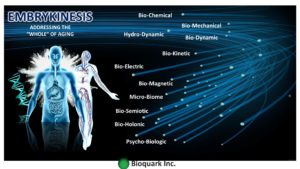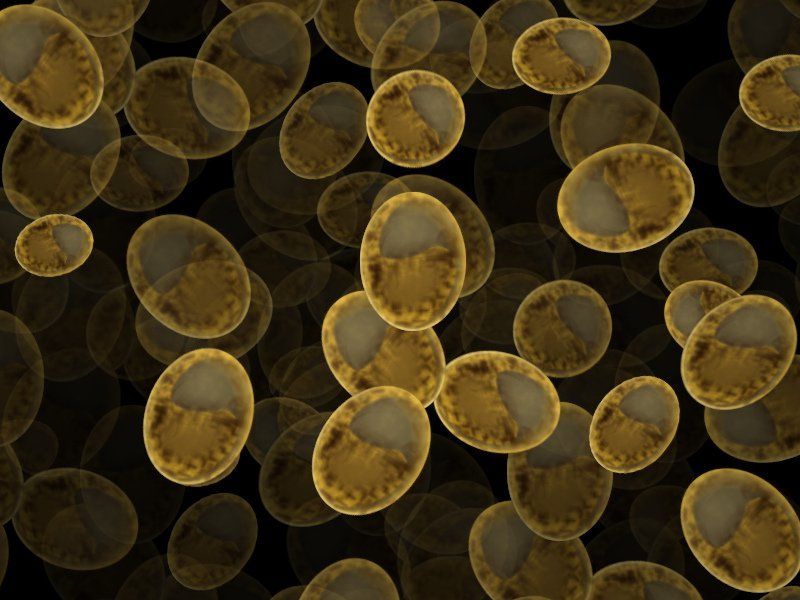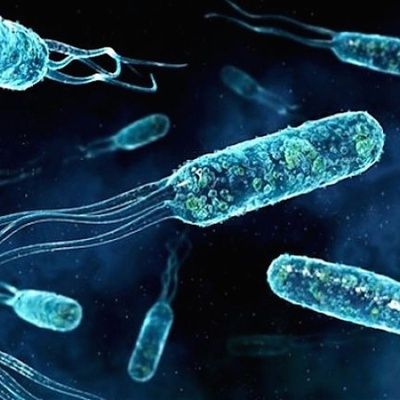Category: bioengineering – Page 186

Regenerage — SMX Radio — The Net of Regenerative Medicine — Bioquark
Theoretically Possibility That Gene Edited Twins Received a Tiny Intelligence Enhancement
The question and answer interview of He Jianku conference presentation has the most interesting parts of this debate about human gene editing of embryos. The interview starts at about 1 hour and 28 minutes of the record. The formal presentation showed that the scientist He has taken appropriate scientific care to perform the work. He took care to make sure it was on target and was successful. He took care to make sure there were no unintended off-target side-effects.
* the parents (father HIV positive) made a choice to use the edited embryos versus unedited * the CRISPR vector used to make the change. Appears to be the kind that can be ordered for about $100. There have been adult people who have self-experimented with mail order gene editing kits * the conference interviewer asked about whether He Jianku was aware of a few other research papers. Some paper suggests that the gene CCR5 could cause increased susceptibility to flu and another suggests a tiny increase in cognitive effect.
Intelligence is controlled by many thousands of genes.

Bioquark — Electroceuticals — Real Bodies

CRISPR creates new species with single giant chromosome
For at least the last 10 million years every yeast cell of the sort used to make beer or bread has had 16 chromosomes. But now—thanks to CRISPR technology and some DNA tinkerers in China—there are living yeast with just one.
Genome organizer: We humans have our genes arranged on 46 chromosomes, yeast use 16, and there’s even a fern plant with 1260 of them. That’s just the way it is. And no one is quite sure why.
The big one: Do we really need so many chromosomes? That’s what Zhogjun Qin and colleagues at the Key Laboratory of Synthetic Biology in Shanghai wanted to know.

Valery Novoselov: Investigating Jeanne Calment’s Longevity Record
Questions have been raised recently regarding Jeanne Calment’s record as the oldest recorded human.
If you open an article dedicated to supercentenarians, it is very likely that at its very beginning, you will see the name of Jeanne Calment, the oldest known person in the world, who is believed to have lived for up to 122 years. Jeanne is not merely a unique phenomenon from the point of view of statistics; over the years, she became a symbol of extraordinary human capacities.
For a person who sticks to a healthy lifestyle or even engages in biohacking in order to live longer, Jeanne’s record is a teasing goal to achieve and surpass; however, to the researchers of aging, this extremely rare event is rather a reason for curiosity – and skepticism.

“Is curing patients a sustainable business model?” Goldman Sachs analysts ask
Analyst Salveen Richter and colleagues laid it out:
The potential to deliver “one shot cures” is one of the most attractive aspects of gene therapy, genetically engineered cell therapy, and gene editing. However, such treatments offer a very different outlook with regard to recurring revenue versus chronic therapies… While this proposition carries tremendous value for patients and society, it could represent a challenge for genome medicine developers looking for sustained cash flow.
For a real-world example, they pointed to Gilead Sciences, which markets treatments for hepatitis C that have cure rates exceeding 90 percent. In 2015, the company’s hepatitis C treatment sales peaked at $12.5 billion. But as more people were cured and there were fewer infected individuals to spread the disease, sales began to languish. Goldman Sachs analysts estimate that the treatments will bring in less than $4 billion this year.

The US Military Is Genetically Engineering New Life Forms To Detect Enemy Subs
The Pentagon is also looking at living camouflage, self-healing paint, and a variety of other applications of engineered organisms, but the basic science remains a challenge.
How do you detect submarines in an expanse as large as the ocean? The U.S. military hopes that common marine microorganisms might be genetically engineered into living tripwires to signal the passage of enemy subs, underwater vessels, or even divers.
It’s one of many potential military applications for so-called engineered organisms, a field that promises living camouflage that reacts to its surroundings to better avoid detection, new drugs and medicines to help deployed forces survive in harsh conditions, and more. But the research is in its very early stages, military officials said.

CRISPR has many promising applications—but the gene-edited twins represent something more troubling
Last week Chinese researchers rocked the world with reports that twin babies whose genes the scientists’ edited prior to birth had been born, the product of secret experiments that are being widely decried as unethical. Even as that story plays out, it is true that CRISPR gene editing is already being used in humans, in ways that illustrate just how unethical this recent use was.
“Patients’ parents have been emailing me a lot,” says Hye Young Lee, a researcher at the University of Texas San Antonio whose work looks at alternative delivery methods for CRISPR. Lee says she normally gets a few emails a month from the parents of the patients she works with, but that the number of emails went up recently—in relation, she suspects, to the news of the CRISPR babies, which is creating the illusion that CRISPR and other gene editing techniques are ready for extensive use in humans.
The scientific community’s current consensus is that they’re far from being at that stage—and it’s impossible to know now when or if they will be. But gene editing is being used in adult humans, to early trials to treat genetic diseases. In terms of gene editing for adults, “I know that there are things going on,” Lee says, but it’s nothing like this week’s news. Although her own work is at least a few years away from being ready for human testing, there are some cautiously progressing trials at drug companies using CRISPR in adult humans who have diseases that are the result on mutations in a single gene.
